subquatorial belt
oceans, withers in the Indian Ocean and at the setting of the Pacific Ocean, as well as over the Northern Asia and in the paths of Africa and the Eastern America. The inner-tropic convergence zone at once from the equatorial depression moves through the regions two times per day - from week to week and from night to day. That is why, in the cich regions, they collect the panuє skidny (pasatny) transferred, minlivy vlіtku to the last transfer.At the same time, with a large seasonal change of overwhelming weather conditions, there is a change of tropical weather for an equal period of winter to summer.
temperature
Wonderful sharp bends of the rychny hіd fell in the zones of tropical monsoons. So, in Kolkati, with a small amount of fall of 1,800 mm, with a leaf fall of 2,730 mm, and in the chest - 5 mm. Zagalom can be said that for 4 months of panuvannya of lithium monsoon in India, 90% of litter sums are fallen. Those will come to the tsiy zones and on the other continents. In Konakri, in the chest - birch vipadaє 15 mm, and chervny - verresnі 3 920 mm. At Goyana, with a small amount of 1: 750 mm, the charge (from grass along the spring) is 90 mm, and the drop (from the leaf fall through the birch) is 1390 mm. In Khartoum, with the dryness of the climate, there is still 130 mm of fall from the lime tree and 130 mm of fall, and from the fall of the leaves, the smell does not smell.
characteristic
Risko changes in seasons are also absolute and reasonable in the weather (maximum a little) and gloomy weather (a high maximum of a little and a small minimum charge); for example, in Kolkati, it becomes 84% in lime and 8% in the present. It is possible to say that in the midst of the richest latitudes, it expands into the high latitudes, the equatorial zone, and in the winter months, it expands to the low latitudes, and the subtropical zone of the high vise.
Near the dry winter, the landscape of the shroud is especially characteristic for the climate of tropical monsoons, i.e., E. tropic to Lisstep... On the descent and in the central regions of the Indian tree, drop leaves during a dry winter period.
In one area of the tropical monsoons, there is a chance to find the average temperature on the Earth. on pivdenno-western shores The Red Sea in Eritrea is one of the few who consumed the Lithuanian monsoon from the pivdennaya pivkuli, transferring the Efiopske nagir'ya. At the same time, the temperature additionally changes as a result of the process. Tom, on the Uzbek Eritrea, spares even higher temperatures. At Massawa Average temperature midnight + 26˚, lime + 35˚, and middle + 30˚.
 |
 |
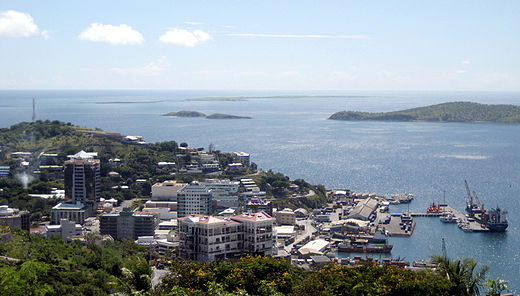 |
|
Posilannya ta dzherela
- Meteorology and Climatology... Leningrad, 1968 Author - S. P. Khromov
- atlas of light... DNVP cartography, 2005 p
The subquatorial climatic belt is transitional and developed in the winter and in the winter, all the way to the tropical belt.
climat
Vlіtku, in the zones of the subquatorial belt of re-ferrying the monsoon type climatu, which is characterized by great number fall. The characteristic peculiarity of the appearance of the change of masters from the equatorial on the tropical fallow during the season of rock. The fee is spared here dry pasati.
The average temperature varies between 15-32º С, and the number of fallen leaves is 250-2000 mm.
The season of planks is characterized by a high number of fallen trees (as much as 95% of the population) and is usually close to 2-3 months. If you are overwhelmed by the midst of tropical weather, the climate is dry.
The edges of the subquatorial belt
The subquatorial climatic belt passes through the provinces: Pivdennoi Asia (Pivdennoi Azii (pivostriv India: India, Bangladesh and the islands of Shri-Lanka); Pivdenno-Shіdnoї Asia (Pіvostrіv Indochina: Myanma, Laos, Thailand, Cambodia, V'atnam, Fіlіppini); paved part Wine of America: Costa Rica, Panama; Of America: Ecuador, Brazil, Bolivia, Peru, Columbia, Venezuela, Guyana, Surinam, Guiana; Africa: Senegal, Mali, Guinea, Libereia, S'orra Leone, Cote d "Ivoire, Ghana, Burkina Faso, Togo, Benin, Niger, Nigeria, Chad, Sudan, Central African Republic, Uganda, Uganda, Uganda , Burundi, Tanzania, Mozambik, Malawi, Zimbabwe, Zambia, Angola, Congo, DRC, Gabon, as well as the islands of Madagascar; the private part of the Ocean: Australia.
Natural zones and subquatorial zones
Map of natural zones and climatic zones of the world
Subquatorial climatic belt including offsets natural zones:
- savani and rіdkolіssya (Pivdenna America, Africa, Asia, Oceania);
On the Earth, there are two sub-equatorial climatic belts: the first and the second, which can be randomly expanded in both equatorial and tropical belts... Subquatorial belts hunt for the territory at 20 ° N. NS. i 20 ° S sh., and on the street and on the first descent of Asia they fall to 30 ° N. NS. on all continents (the territory of Antarctica), as well as in the Svitovoy Oceans, and are found between the passages.
Climat is monsoon, during the winter season. Daniy klimat is characterized by equatorial vologue vіtra vlіtku; dry tropical winters, passats charged at mid-thousandth temperatures, which fluctuate from 15 to 32 ° C, only frosts and winter weather are prevented in high regions. The water of the oceans in the subquatorial belts increases the temperature in the inter-waterways of 25 ° C. The higher temperature, increased salinity and a small amount of acidity in the water does not imply biological productivity.
The greatest triviality of the boarding period (8-9 months) per ric is typical for areas that are close to the adequate level with a number of natural fallen-downs - from 250 to 2000 mm. With a clear view of the adequacy, the triviality of the board period changes to three months. On the mountain ridges on the side of the lithium monsoon, the maximum number of fallen earthly cool- in the middle, it is close to 12000 mm in rіk. During the period of a fit lіtnіy period, In the fall of 90-95% of the fall, dry - for the winter. Subquatorial belts may be developed by the river netting and non-stable waters (mainly in Africa) with seasonal variations in the water: flowing rivers and lakes with water, may be; charge - їх рівень fall, more dry rychechki dry out.
Flora and fauna
In the subquatorial belts, there are zones and subquatorial monsoon green leaves, shroud and ridkolisya. Subquatorial monasteries in Africa, Central and New America, at the New Years of Australia and Asia. Soil in the central zone is chervonokolirna laterite. Overgrowing є changes of deciduous and deciduous-green foils. Savannah zones occupy up to 40% of the territory of Africa, the stench is characteristic of the Holy Virgin Central America, Australia, Asia.
In the savannah zones, the triviality of the board period is: at the approximate cordons it is 8-9 months, on the last cordons up to 2-3 months. In the world of change in the number of fallen goods in the rik change roslinny light from savannah leaves and higher-class shrouds on red soils to xerophilic birch trees, empty shrouds and chagarniks on red-brown and brown-red runts.
The fauna lies in the middle of the wilderness cover of the zones: the fossil creatures linger in the monstrous wilderness forests, in the savannahs and on the grassland - the creatures that are stuck to life on the edge of the wilderness and good transfer. Tse, in the main, zhuyni parnokopitnі, hijakas, gryzuni, termіti, snakes. Lyudin greatly altered the landscape of the zones, obroblyayuchi runt, visuyuchi silsko-state culture, growing dry rivnini and pristosovuchi їkh pіd pastoral.
On the Earth, there are flexible climatic belts, skinny from which supervises are not only singular temperature regime, Ale і absolutely amazing representatives of flora and fauna, original relief and bagatma іnshih features. Їх vivchennya allows you to more beautifully reveal the versatile nature of the planet. For example, a subquatorial belt. What do you characterize?
Main features
There are two subquatorial belts on the planet, one each in the skin. The stench will amaze the territory between 20 and 30 degrees. At the Svitovoy ocean, the subquatorial belt is surrounded by a cordon of passat flows. Yogo klimat to become monsters and winter during the season. A short period of air is blown in the wind, the charge is dry and tropical. In the cold season, it rises from 15 to 32 degrees, supercharged by frosts and a heavy fall in high-rise dilyankas. The water in the ocean in the whole belt will rise to a temperature of plus 25. At the same time, due to the increased salinity, it will bring up to the lowest bioriznomanittya in the pool. 
territorial views
The characteristic of the subquatorial belt is unique to the basic rice, ale and vidminnost, zoomovleni skin specific mice. For example, in districts that have grown in size, there is a maximum number of boards, which can go on for nine months and go up to two thousand millimeters of fallen off. On the mountain ridges, the figure grows in number of times. At the same time, in some regions, dry periods are possible. For example, in Africa, the amount of water is strong, and it is easy to see the water from the lake and the rivers.
Roslinny light
The subquatorial climatic belt grows like worm-like soils, special roslin... The stench is kindly attached to the muscular vologosti and the fallen fall - to grow without tiers and grow into good leaves and a straining root system. Bioriznomanittya hostile: here you can know a lot of trees with true fruits or valuable bark, palm trees. subquatorial belt including zoni shroud. The stench comes from growing trees with great growths of chagarniks and high grass. The savannah has a large rudder of the chervono-drill, the ground. Roslinnist is represented by such breeds as acats, palms, baobabi, mimosi. The most dry dilyankas have aloe seeds. A great number of herbs are also characteristic of the savanna regions. 
Tvarinniy svit
The diversity of the fauna is undifferentiated in the middle, as the subquatorial belt evolves. Dilankas in fluffy soil bag all kinds of spineless and microorganisms. In the lower tier, fox pigs, okapi, small hogs and elephants can be trained. They live and burn on the territories with water. On the trees live nominative primates, gryzuns, birds and coma, and some of the most widespread flies and term. The greatest hijack is a leopard. In the minds of the savan, there are diverse species of pigeons, such as buffaloes, antelopes, zebras, and rhinos. There you can also see elephants, hippos, giraffes. Riznomanitni and hijaki: cheetahs, levi, gyni, jackals live in savannah. Light of feathered performances by ostriches, secretary birds, marabou cherries. The three birds can also be identified as ostriches, which are sometimes used to navigate in the Sahara. Near the empty regions themselves, there are a lot of lizards and other snakes, there are small antelopes lingering there.
Geography sees seven main climatic zones. One of them is the subquatorial belt. Wine is divided into 2 types - wine and winter. The stench of the rosette at the common pavkul, which is between the equatorial and tropical belts.
Territories of subquatorial belts extend up to 20 ° N. NS. і 20 ° S NS.
Natural zone and subquatorial climatic belt
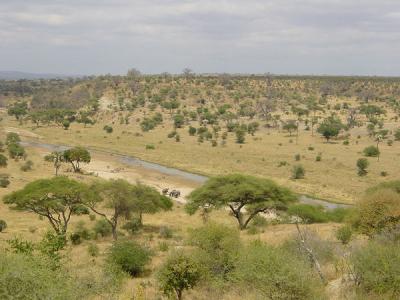
We will move through those belt, then we will panyut disastrous masi- a bunch of equatorial power supplies, and a charge for the tropics. Average temperatures є from +15 to +32 degrees. And the temperature of the water surfaces is practically stable, it becomes +25 degrees.
Equatorial masi bring along a period of spicy planks with them. The tax is very dry here, so you have to fix it in the tropic feed. Ale, do not marvel at the change of feast, it’s getting hot here.
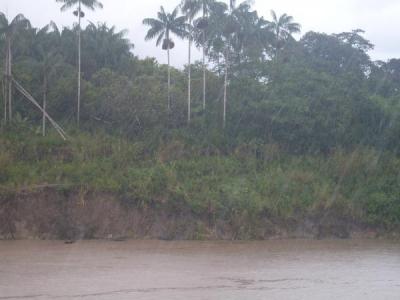
Proximity to adequacy to be seen on the number of fallen-downs - the closer, the bigger. At the same time, there is a great part of the fallen trees near the pouring ones lithium boards... It may take up to 9 months to get frowned when it is accompanied by thunderstorms and planks. For a whole hour there is a fall of 250-2000 mm. On the territory, all the way from the village, the period of heavy boards will speed up to 3 months. Most of the fallen was recorded in the mountains, when there are floods of summer months - there is a drop of 12,000 mm near the river.
On the territory of the subquatorial belt, there is a rich rychok and lakes. A bit of stench comes from the banks, and the charge gets dry.
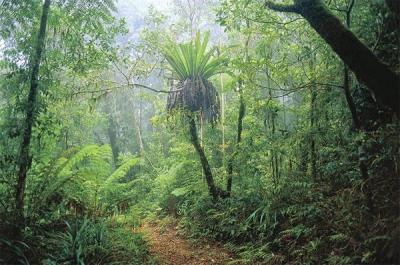
Territory, rostasovanі bіlya ekvatora, pokritі deciduous-green tropical forests... Behind them, they roztashovani musonnі lіsu. And there are few areas that have been left for shrouds and rides.
From the foodstuffs, there are pairings, huts, grizzlies, birds, komakhs, snakes and іnshi. Areas of their living are without a middle ground in their lives. For example, the foxes of the creatures know a lodge in the monsoon forests. And see, zdatnі life in the open spaces, living yak in the woods, so in the shrouds.
Dіyalnіst people vіdbilis on the natural zones of cich mіsts. The landscapes of the subquatorial belt have been given to special zims. Namagayuchis viroshuvati cultural vid, vivodyachi, fertilizing and zabrudnyuchi the surface of the earth, people made their own ambiguous contributions to the center.
The edges of the subquatorial climatic belt
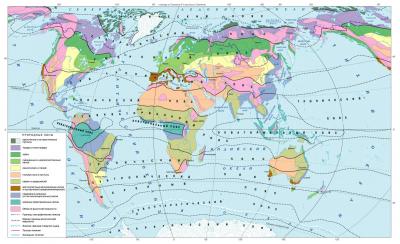
subquatorial climatic belt Pivdennaya: Pivdenna part of Pivdennaya America, part of the Caribbean islands, Pivne part of Pivdennoy America, Brazilian plateau, part of Africa, great part of Pivdennoy and Pivdenno-Western Asia, Australian and Pacific islands.
In America, Costa Rica, Panama, Venezuela and Guiana are known to the whole belt.
The African shroud belt from Dakar to Somalia is also located on the territory of the subquatorial climatic belt.
India, Bangladesh, Birma, India, new China, Fіlіppini - all the centers of the subquatorial belt.
